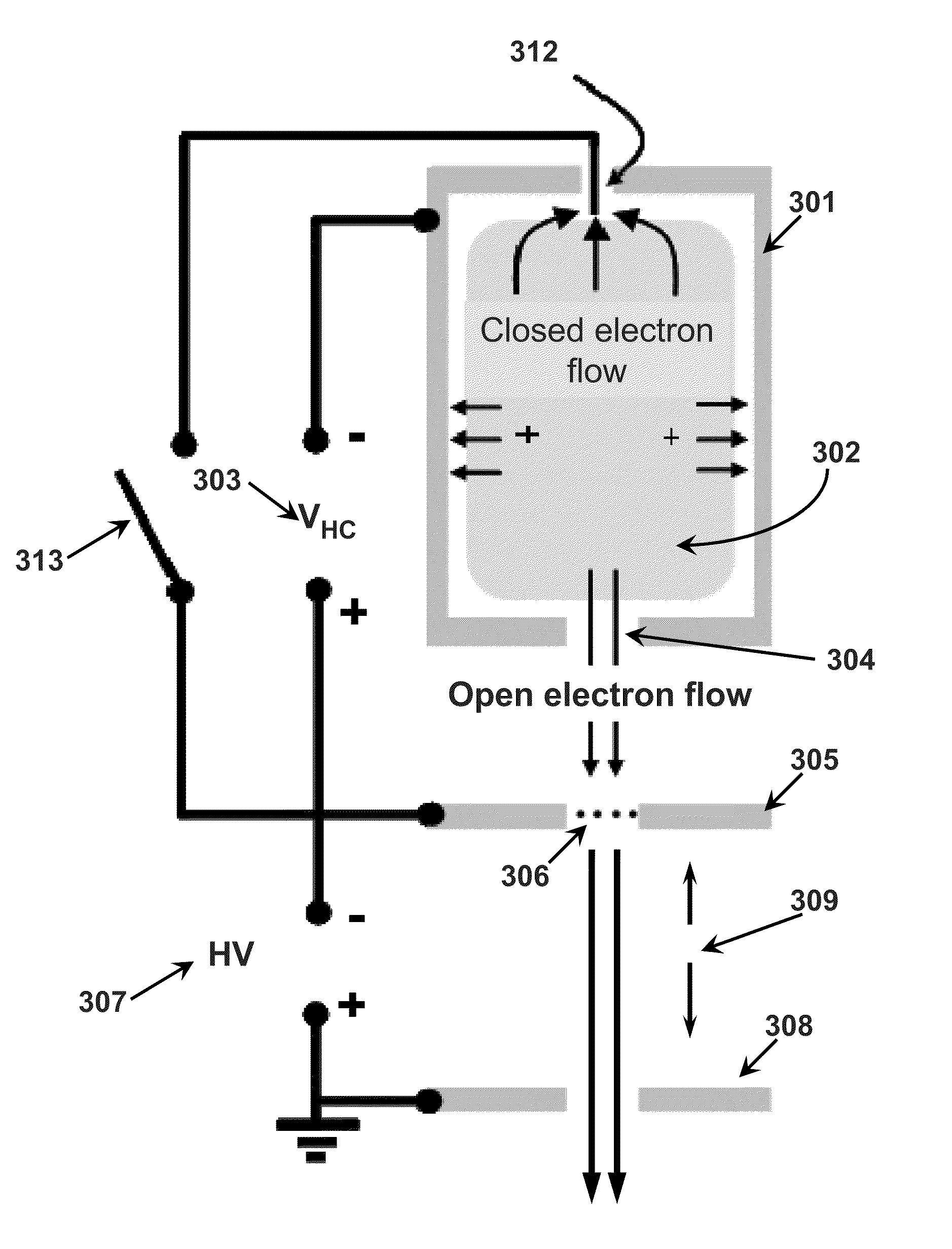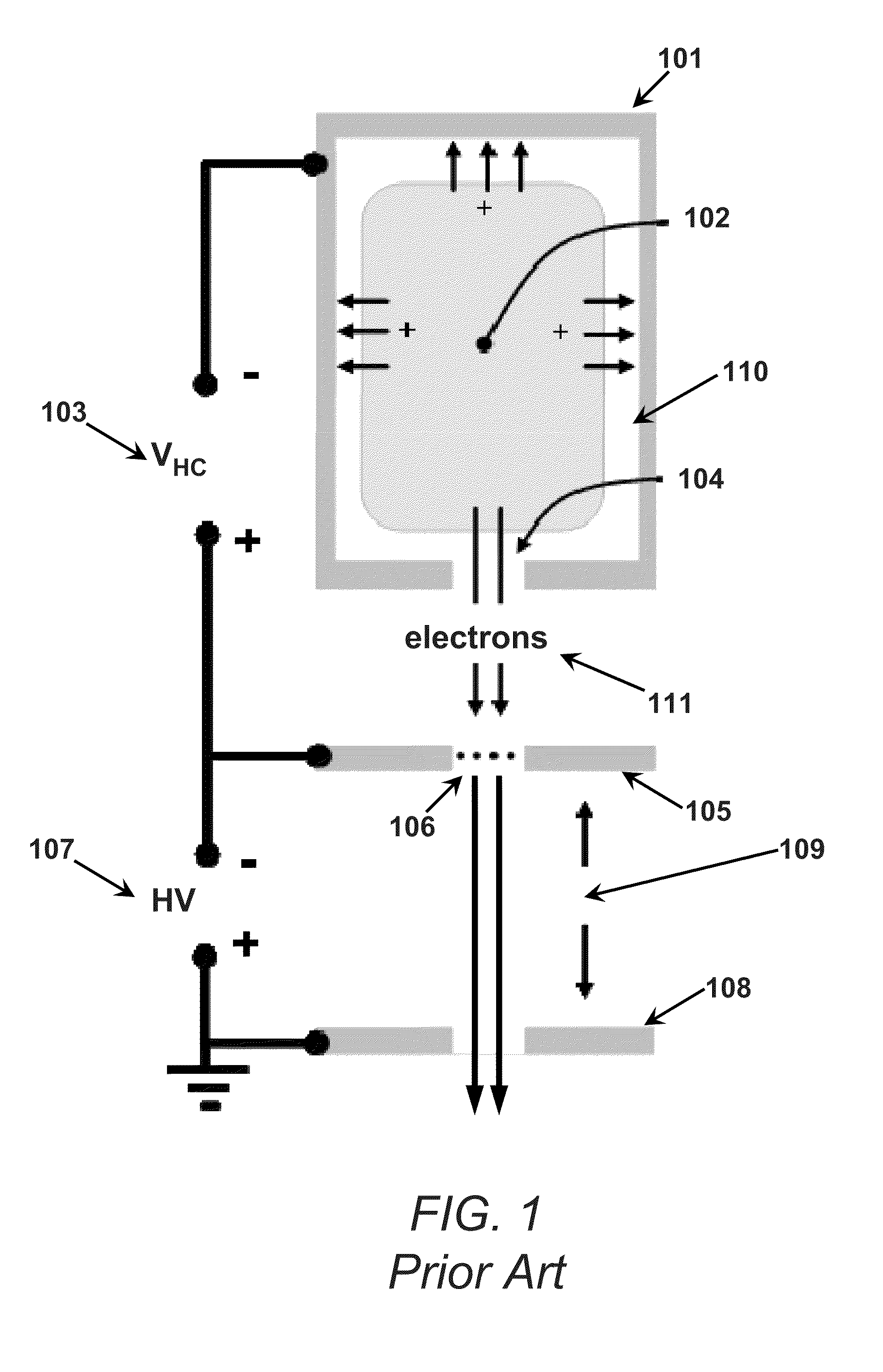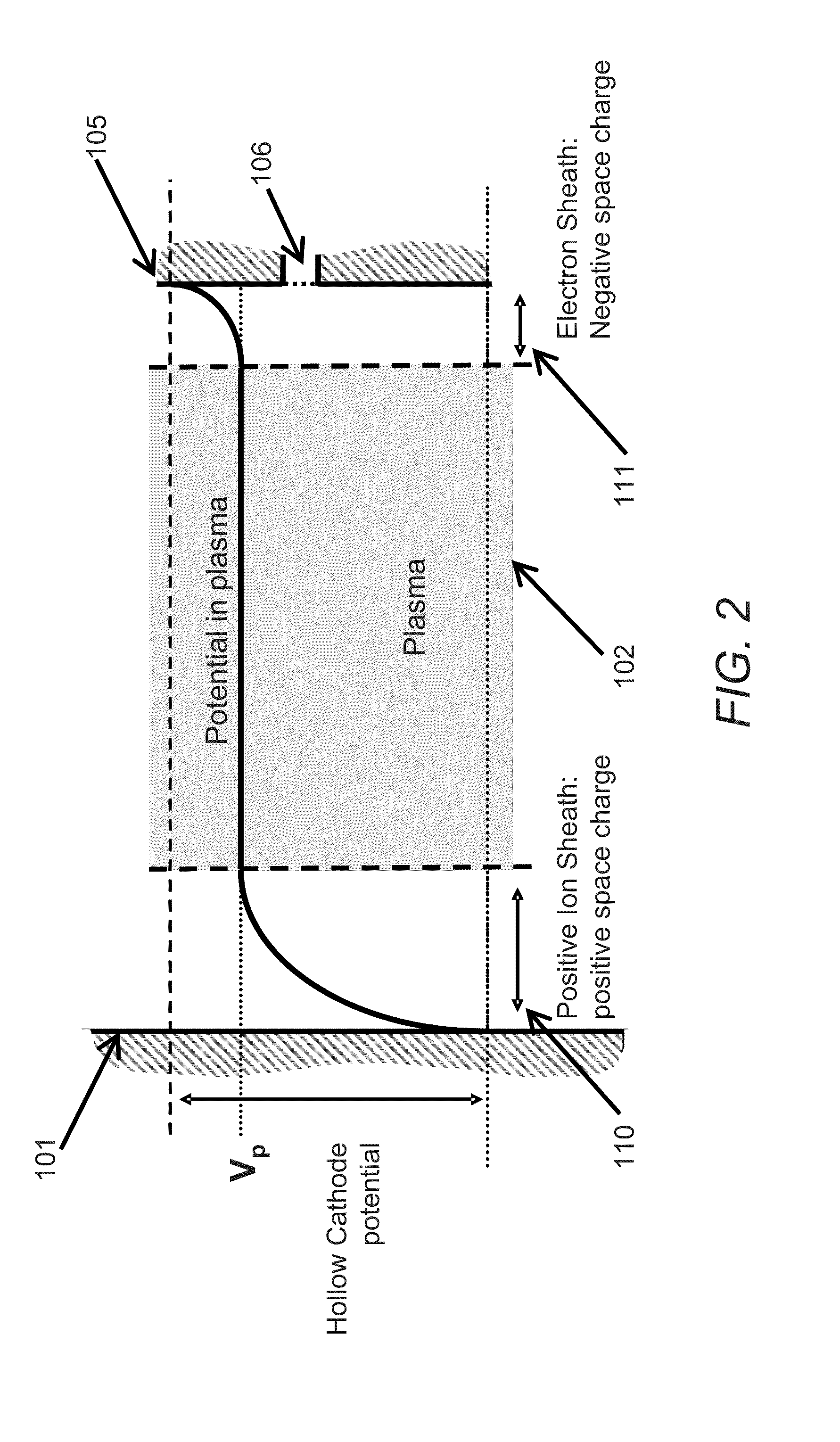Apparatus and Method for Regulating the Output of a Plasma Electron Beam Source
a plasma electron beam and output technology, applied in the direction of light sources, electric discharge tubes, discharge tubes/lamp details, etc., can solve the problems of large fraction of electron current to the anode, uncontrolled output, and typical operation of devices, so as to achieve easy operation and greater control of the electron beam
- Summary
- Abstract
- Description
- Claims
- Application Information
AI Technical Summary
Benefits of technology
Problems solved by technology
Method used
Image
Examples
example
An exemplary embodiment of the present invention tested by the inventors hereof will now be described. In this exemplary embodiment, a 7.5 cm long cylindrical stainless steel hollow cathode with an interior cathode surface area (AK) of 50 cm2. Due to the applied magnetic field, the exit orifice surface area of the cathode determines the effective surface area of the acceleration anode (AA) relevant for the formation of the electron sheath. Thus, with the exit orifice area 0.03 cm2, the ratio of the effective area of the acceleration anode to the area of the hollow cathode was
AAAK=6×10-4.
Argon gas was fed into the back side of the cathode. For an argon discharge, the square root of the electron-to-ion mass ratio was
memi=3.7×10-3.
Thus, the criterion described above for an electron sheath to be present,
AAAK≤memi,
was satisfied.
The acceleration anode was located approximately 0.05 cm from the cathode exit and was made of stainless steel mesh (150 lines / in.), which provided a reasonably t...
PUM
 Login to View More
Login to View More Abstract
Description
Claims
Application Information
 Login to View More
Login to View More - R&D
- Intellectual Property
- Life Sciences
- Materials
- Tech Scout
- Unparalleled Data Quality
- Higher Quality Content
- 60% Fewer Hallucinations
Browse by: Latest US Patents, China's latest patents, Technical Efficacy Thesaurus, Application Domain, Technology Topic, Popular Technical Reports.
© 2025 PatSnap. All rights reserved.Legal|Privacy policy|Modern Slavery Act Transparency Statement|Sitemap|About US| Contact US: help@patsnap.com



